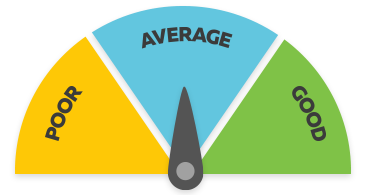Shearer
Kaikuti Hipi
Alternative titles for this job
Shearers cut the wool from sheep with clippers.
Pay
Shearers with one to three years’ experience usually earn
$49K-$65K per year
Shearers with more than three years’ experience usually earn
$65K-$130K per year
Source: NZSCA, 2019.
Job opportunities
Pay
Pay for shearers varies depending on skills, experience and the number of sheep shorn.
- Shearers usually earn about $195 for every 100 sheep they shear.
- Shearers with up to three years' experience can shear up to 200 sheep a day and earn $49,000 to $65,000 a year.
- Shearers with more than three years' experience can shear between 200 and 400 sheep a day and earn between $65,000 and $130,000 a year.
Source: New Zealand Shearing Contractors Association, 2019.
-
PAYE.net.nz website - use this calculator to convert pay and salary information
-
Employment New Zealand website - information about minimum wage rates
(This information is a guide only. Find out more about the sources of our pay information)
What you will do
Shearers may do some or all of the following:
- catch sheep from a catching pen
- move sheep out of the catching pen to a shearing stand
- shear wool off in a set pattern of strokes
- release sheep into a counting-out pen
- clean combs and cutters and sharpen them.
Skills and knowledge
Shearers need to have knowledge of:
- how to catch and handle sheep
- how to hold sheep for shearing
- proper sheep lifting and moving techniques
- good shearing techniques
- how to use and maintain clippers
- what type of equipment to use in certain conditions.
Working conditions
Shearers:
- usually work eight or nine hours a day and sometimes work weekends
- travel each day to a shearing shed, and sometimes stay in shearing quarters
- work in busy and noisy shearing sheds
- work mainly during peak shearing times from November to March and from July to September.
What's the job really like?

Sam Brooks
Shearer
Passion for shearing discovered over the years
Over the last 10 years, Sam has developed a passion for shearing. He started off as a shepherd and was told by his manager to get into shearing if he wanted to get ahead on the farm. He worked on a wool press until he was ready for shearing.
Hard work pays off
“If you want a pay rise just go a bit faster”, he says that hardworking shearers can earn up to $150,000 per year.
“It’s important to be punctual and to have a good work ethic. You need a clear head and a bit of 'go' behind you to strive for the bigger numbers”.
Teamwork and conditions make job worthwhile
He says one of the best parts of the job is working in a team of six to eight people every day.
“You’re getting picked up for work and fed, and you don’t have to worry about much.”
Shearing contractors will give you work
Sam’s advice for anyone wanting to start in shearing is to call a shearing contractor.
“Let them know you’re keen to learn. To be honest, you’re not going to get a shearing spot straight away. Unless you can shear 200 or more sheep a day, you normally have to do an apprenticeship on the wool press first.”
Shearer video
Peter Downs talks about life as a shearer– 2.03 mins.
This is my first season sharing.
So this is the wool shed. This is where all the action happens.
We got our shearers over there, our wool handlers. This is the wool press.
This is where most young people normally start off.
They come into the shed and they fill up the pens for the shearers and pick up
the wool and put in there and make bales with it. It is a seasonal job,
but the South Island tends to shear a little bit later than the North Island
main shear. A main shear will last about 4 months.
So once we run outta work up here, once all the sheep are shaun,
then we normally head down to the South Island,
do another 4 months down there, come back here. Another 4.
I quite enjoy like the lifestyle, I like traveling.
In the future I wanna go overseas,
so I'm gonna use shearing as a means to go overseas. So these are my moccasins,
shearing shoes. They're made of leather,
so they protect your feet if you muck up and the handpiece goes towards your
foot. I do enjoy Thursdays, which is payday, but other than that, I, yeah,
mainly the people. People are my favorite parts. It's really like, you know,
down-to-earth sort of people.
We have a lot of laughs and good times and that sort of thing. Oh,
no pressure guys. . This is the handpiece.
And then on the bottom we got our comb – on the top, our cutter.
All I have to do is click on onto the counter and then yeah, go grab one out.
It took me a long time to share my first sheep but yeah,
you sort of just practice on it every day. It's just training your muscles,
like muscle memory.
You get faster as the time goes on. After a while you learn how to hold them and
how to stand and how to work the hand piece right.
Everything just gets better over time. I used to drive trucks up in
Auckland, but I got sick of the traffic.
There's a lot of contractors you can look up online,
like shearing contractors and you just give one of them a call and most of
the time if it's the right season,
they'll give you a job. There's a lot of different things you can do in the wool
shed. It's a very physical job,
so you gotta like not be afraid to get dirty and sort of have a bit of pain.
But yeah, it all comes with it sort of thing. No,
you don't need a qualification to become a shearer.
As long as you're keen and you can work hard then you'll be away.
Just go for it, really. Call up a contractor or call up somone you know,
and then just go for it.
Entry requirements
There are no specific entry requirements to become a shearer as you gain skills on the job. However, a New Zealand Certificate in Shearing – Blade/Crossbred/Fine (Level 4) may be useful.
Secondary education
No specific secondary education is required for this job, but agricultural and horticultural science to at least NCEA Level 2 is useful.
Personal requirements
Shearers need to be:
- safety-conscious
- hard-working
- reliable
- good at using and caring for equipment.
Useful experience
Useful experience for shearers includes work on farms or jobs that involve handling animals.
Physical requirements
Shearers need to have:
- excellent fitness and health and must be strong
- good hand-eye co-ordination.
Find out more about training
- Primary Industry Training Organisation
- 0800 208 020 - info@primaryito.ac.nz - www.primaryito.ac.nz
What are the chances of getting a job?
Shearer opportunities average but likely to improve
Opportunities for shearers are average because vacancies are limited.
However, demand for shearers is expected to increase, with employment numbers growing to over 2,000 by 2021, according to MBIE.
According to the Census, 1,719 shearers worked in New Zealand in 2018.
Best opportunities for shearers in summer
Shearing opportunities are best in the South Island during summer and autumn. In the North Island, sheep are shorn during summer and winter.
Shearing season limited
Some shearers work for three months a year while others may travel locally or overseas and work for as much as 10 months a year.
Qualifications can increase opportunities
Shearing contractors are more likely to employ you if you have a shearing qualification.
Most shearers work for shearing contractors
Shearers usually work for shearing contractors who organise shearing gangs. Some shearers are self-employed.
Sources
- Barrowcliffe, M, president, New Zealand Shearing Contractors Association, careers.govt.nz interview, May 2019.
- Ministry of Business, Innovation and Employment, 'Shearers, Occupation Outlook', accessed May 2019, (occupationoutlook.mbie.govt.nz).
- Stats NZ, '2018 Census Data', 2019.
- Stats NZ, 'Agricultural Production Statistics', June 2018, (www.stats.govt.nz).
(This information is a guide only. Find out more about the sources of our job opportunities information)
Progression and specialisations
Shearers may progress to organising shearing gangs as shearing contractors.
Last updated 9 May 2025

